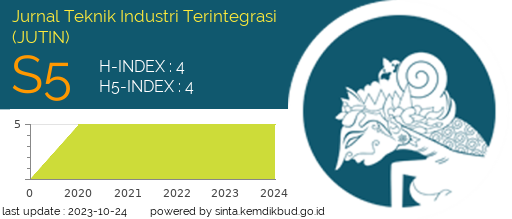Analisis Pengendalian Persediaan Bahan Baku Produksi dengan Metode EOQ (Studi Kasus: Pawon Mas Herman)
DOI:
https://doi.org/10.31004/jutin.v6i4.21008Abstract
One important role in business operations is based on inventory, which is the underlying principle of business. Therefore, a business must be able to predict potential problems as well as potential traps in inventory management in order to the ultimate goal, namely to reduce the total cost to be borne by inventory. Pawon mas herman is one of the bakso shops in Pekanbaru that has been established since 1998. Pawon mas herman is experiencing a fairly rapid business expansion, but a lack of management system or methods to buy or collect raw materials, causes this restaurant to suffer from material shortages or even raw materials shortfalls during the hours of operation. To ensure the business continues from the production process and avoid stopping or collapse due to a shortage of raw materials namely meat and chicken, pawon masherman needs to have a proper plan. The Economic Order Quantity (EOQ) method is used to help in solving problems in particular requirements related to the supply of raw materials. The result of this study is that by using the EOQ method, Pawon Mas Herman farm can save shipping costs up to Rs. 4,740,000. Because, based on the calculations completed using the eOQ technique, the owner of the farm must make meat orders every 7 days, weighing at least 7 kg of meat each time ordering. Pawon Mas Herman is advised to use the EOQ method for control of supplies, there is a significant cost difference.Downloads
Published
2023-10-30
How to Cite
Kamila, M., Rahmadani, D. ., Fitri, N. G., & Am, A. N. (2023). Analisis Pengendalian Persediaan Bahan Baku Produksi dengan Metode EOQ (Studi Kasus: Pawon Mas Herman). Jurnal Teknik Industri Terintegrasi (JUTIN), 6(4), 1493–1499. https://doi.org/10.31004/jutin.v6i4.21008
Issue
Section
Articles of Research
License
Copyright (c) 2023 Muthia Kamila, Desvita Rahmadani, Nadila Gusrialni Fitri

This work is licensed under a Creative Commons Attribution-ShareAlike 4.0 International License.






